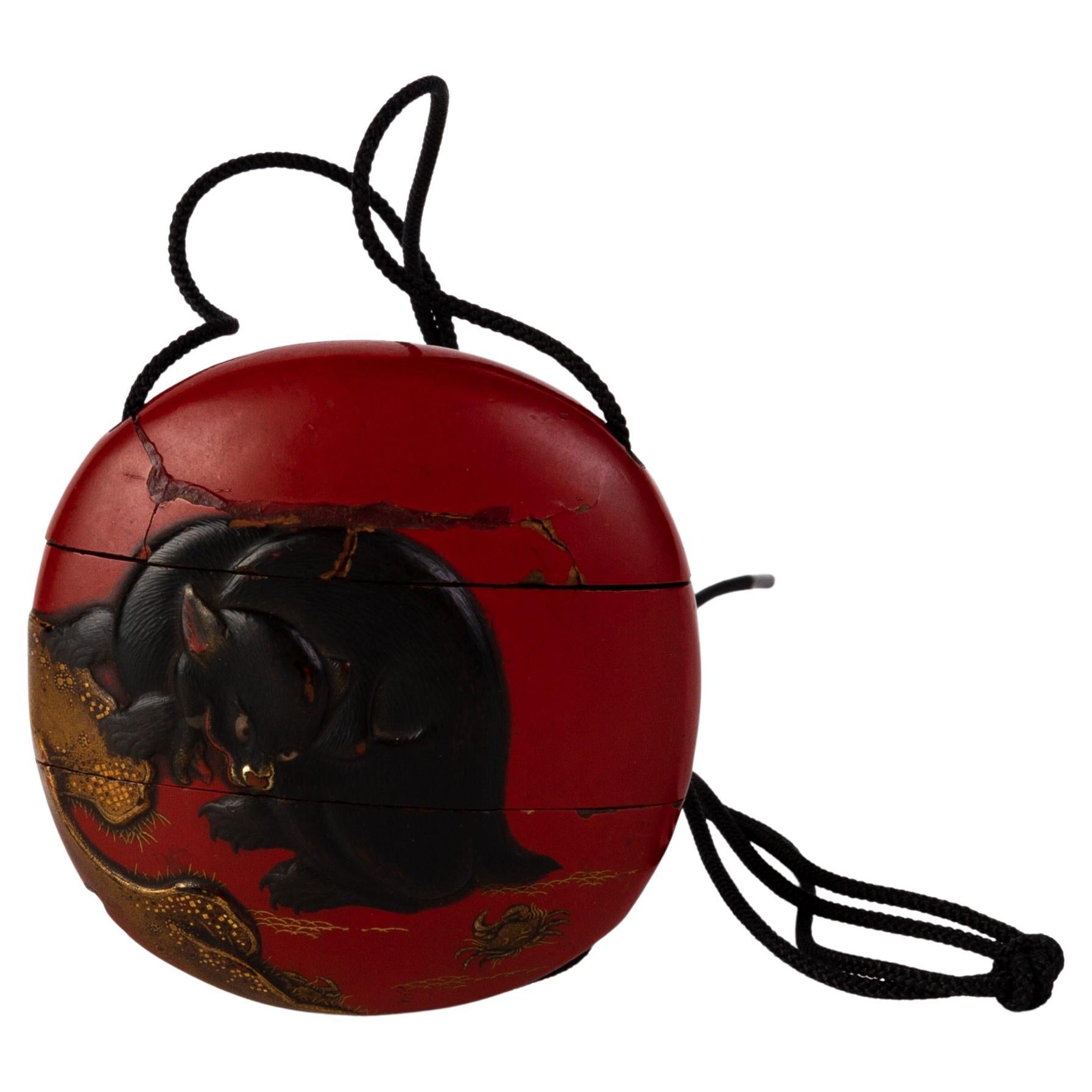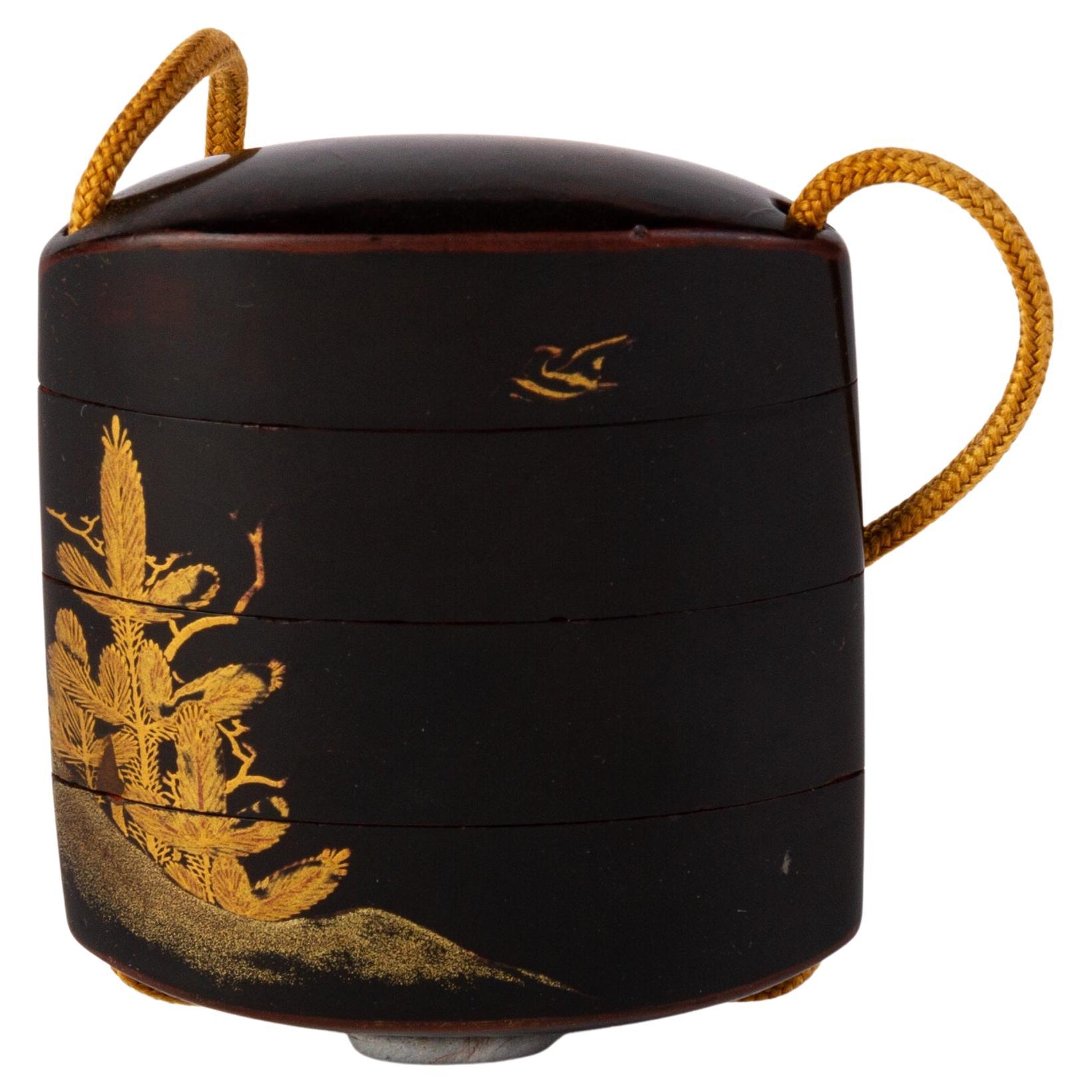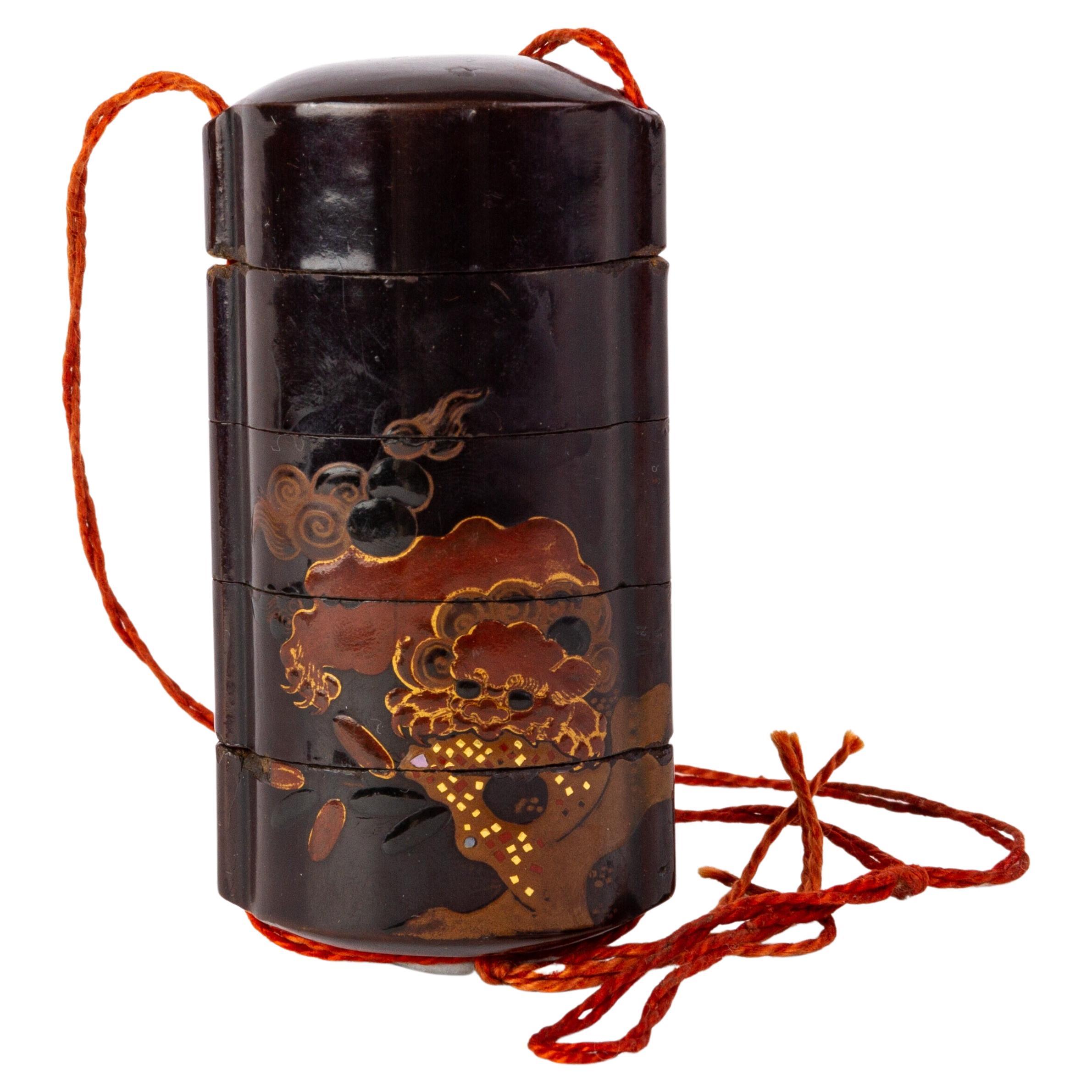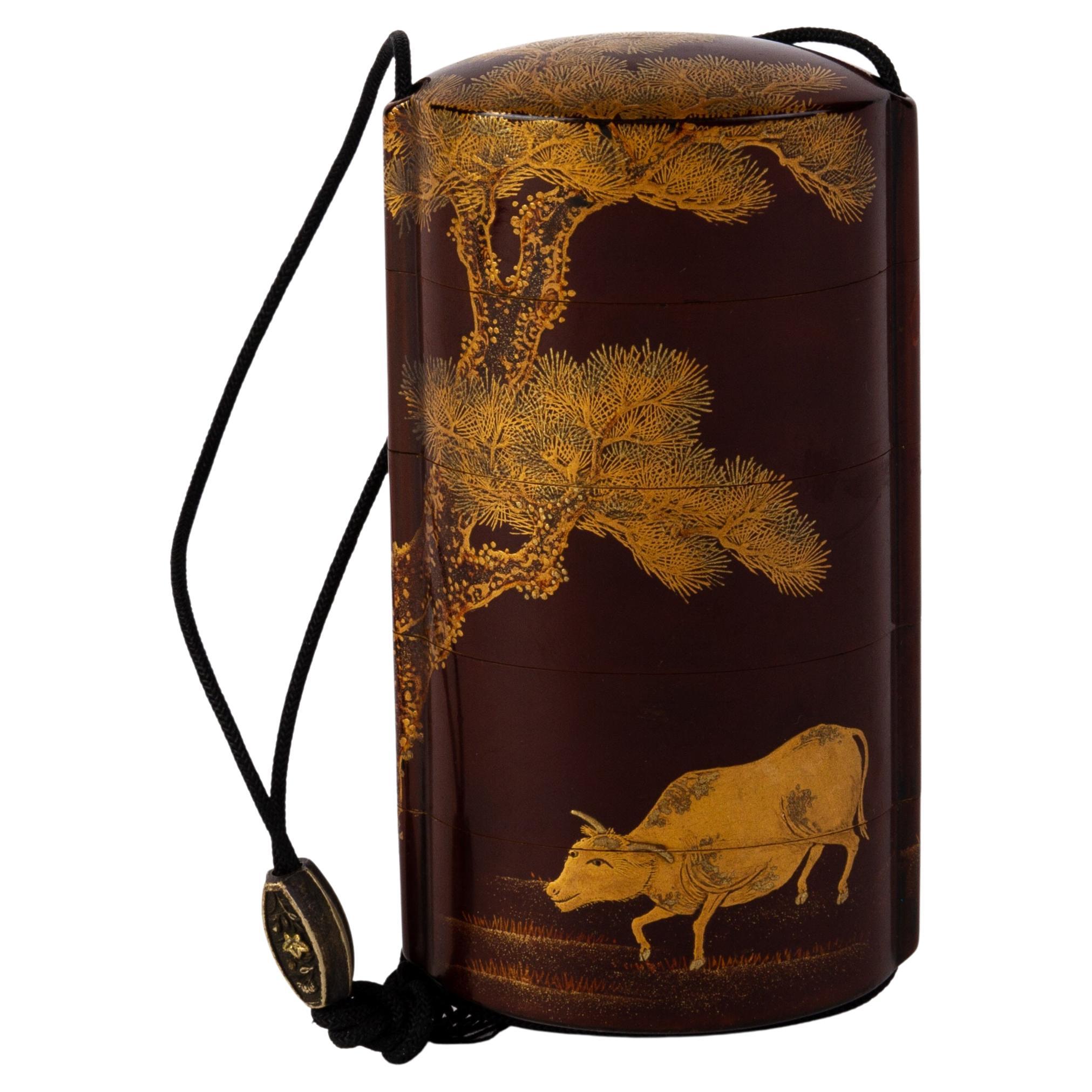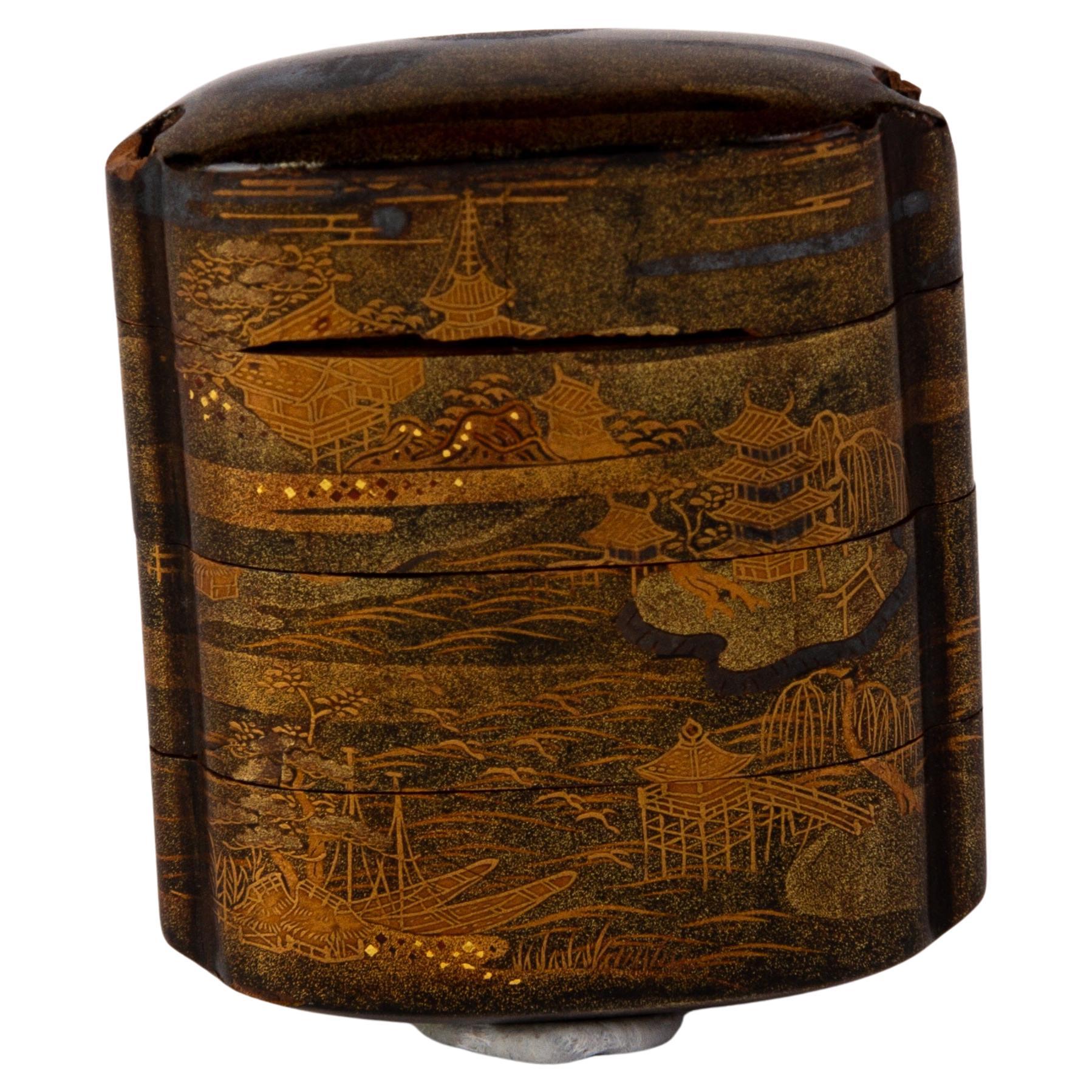Items Similar to Japanese Gilt Lacquered Five Drawer Inro Ojime with Netsuke Meiji 19th Century
Want more images or videos?
Request additional images or videos from the seller
1 of 11
Japanese Gilt Lacquered Five Drawer Inro Ojime with Netsuke Meiji 19th Century
About the Item
Japanese Gilt Lacquered Five Drawer Inro Ojime Meiji 19th Century
Very good condition.
From a private collection.
Free international shipping.
- Dimensions:Height: 0.79 in (2 cm)Width: 2.96 in (7.5 cm)Depth: 2.37 in (6 cm)
- Materials and Techniques:
- Period:
- Date of Manufacture:19th century
- Condition:Wear consistent with age and use.
- Seller Location:Nottingham, GB
- Reference Number:1stDibs: LU9003235416992
About the Seller
4.6
Gold Seller
These expertly vetted sellers are highly rated and consistently exceed customer expectations.
Established in 2010
1stDibs seller since 2023
121 sales on 1stDibs
Typical response time: <1 hour
- ShippingRetrieving quote...Ships From: Nottingham, United Kingdom
- Return PolicyA return for this item may be initiated within 14 days of delivery.
More From This SellerView All
- Japanese Gilt Lacquered Inro Ojime Meiji 19th Century Netsuke HolderLocated in Nottingham, GBJapanese Gilt Lacquered Inro Ojime Meiji 19th Century Netsuke Holder Good condition overall. Four drawer. From a private collection. Free inter...Category
Antique Late 19th Century Lacquer
MaterialsLacquer
- Japanese Gilt Lacquered Inro Ojime Meiji 19th Century Netsuke HolderLocated in Nottingham, GBJapanese Gilt Lacquered Inro Ojime Meiji 19th Century Netsuke Holder Good condition with some wear to lacquer as seen. Three drawer inro. From a...Category
Antique Late 19th Century Lacquer
MaterialsLacquer
- Japanese Gilt Lacquered Inro Ojime Meiji 19th Century Netsuke HolderLocated in Nottingham, GBJapanese Gilt Lacquered Inro Ojime Meiji 19th Century Netsuke Holder Good condition overall. Four drawer. From a private collection. Free inter...Category
Antique Late 19th Century Lacquer
MaterialsLacquer
- Japanese Gilt Lacquered Dragon Inro Ojime Meiji 19th Century Netsuke HolderLocated in Nottingham, GBJapanese Gilt Lacquered Dragon Inro Ojime Meiji 19th Century Netsuke Holder Good condition overall. Five drawer. From a private collection. Free international shipping.Category
Antique Late 19th Century Lacquer
MaterialsLacquer
- Signed Japanese Gilt Lacquered Inro Ojime Meiji 19th Century Netsuke HolderLocated in Nottingham, GBJapanese Gilt Lacquered Inro Ojime Meiji 19th Century Netsuke Holder Good condition overall. One of the gilt cows appears to have lost some of the gilt gold colour. Five drawer. Fro...Category
Antique Late 19th Century Lacquer
MaterialsLacquer
- Japanese Gilt Lacquered Pagodas Inro Ojime Meiji 19th Century Netsuke HolderLocated in Nottingham, GBJapanese Gilt Lacquered Pagodas Inro Ojime Meiji 19th Century Netsuke Holder Good condition, but a very slight crack to base of top drawer. Four drawer inro. From a private collecti...Category
Antique Late 19th Century Lacquer
MaterialsLacquer
You May Also Like
- Japanese Inro with Netsuke, Late 19th CLocated in Stockholm, SEA high quality lacquer inro with a carved wooden netsuke. Both are unfortunately damaged but still very nice art pieces. The way the rooster is executed is just exquisite.Category
Antique Late 19th Century Japanese Lacquer
MaterialsBoxwood, Lacquer
- Japanese Meiji Period Lacquer Six Drawer InroLocated in Newark, EnglandThe Inro is decorated with a gold lacquer base and features mother of pearl shell inlay leaves surounding wheeled cart with foliage. The Inro with a slide action opening which hides ...Category
Antique Late 19th Century Japanese Meiji Lacquer
MaterialsRope, Lacquer
- Japanese Carved Cinnabar Lacquer Inro, Meiji Period, late 19th c, JapanLocated in Austin, TXA good Japanese carved cinnabar three case inro with mixed metal ojime, Meiji period, late 19th century, Japan. The three case inro of standard form, comprised of three container se...Category
Antique Late 19th Century Japanese Meiji Lacquer
MaterialsSilver, Copper
- Japan 1870 Meiji Period Round Five Drawer Inro Lacquered Wood With Flying CranesLocated in Miami, FLJapanese Inro from the Meiji Period (1868-1912). Beautiful Inro, created in Japan during the Meiji imperial period, circa 1870. It was carefully crafted in carved precious wood with...Category
Antique 1870s Japanese Meiji Lacquer
MaterialsGiltwood, Lacquer, Wood, Ebony
- Five-Case Inrō 19th Century Signed Kajikawa Saku Japanese Lacquer BoxLocated in Milano, ITSigned: “Kajikawa saku” and with a red pot seal Height: 3 1/8in (7.9cm) Provenance: Michael Tomkinson Collection Leonard Haber Collection Literature: Michael Tomkinson, A Japanese Collection, London: George Allen, 1898, no. 300 Each case with slightly recessed joints and with different grounds, including kinji, nashiji, togidashi maki-e and gyobu-nashiji, on the obverse decorated with a treasure ship laden with the attributes of the Seven Gods...Category
Antique 19th Century Japanese Lacquer
MaterialsWood, Lacquer
- Japan 1810 Kajikawa Edo Period Five Drawer Inro Lacquered Gilt Wood With RoosterLocated in Miami, FLJapanese Inro from the Edo period (1615-1868) created by Kajikawa. Beautiful Inro, created in Japan by one of the Kajikawa family during the Edo period (1615-1868), circa 1810. Has been carefully crafted in carved precious wood with applications of gilding maki-e and decorated with Japonism patterns. All dan trays are attached together with a himo cord. The detailed craftsmanship was a true pleasure to behold. Period: Edo period (1615-1868). Shogunate. Approximate Date: 1790-1810 Motif: A family of birds consisting of a cockerel, the hen and three chicks. Drawers: Five. Shape: Rectangular navette. Technique: Carved wood, lacquer and decorated in iroe-hiramaki-e on a gold ground. Ojime: 15mm 20mm, oval carved from natural translucent agate. Netsuke: None Weight: 47.70 Grams. Measurements: Inro is 78 mm by 55 mm by 18 mm (3.07 x 2.17 x 0.71 Inches). Signatures: Kajikawa Saku, in the underside with the signature KAJIKAWA. By a member of the Kajikawa family, signed Kajikawa 梶川 Japan, late 18th century to early 19th century, Edo period (1615-1868). The Kajikawa family Kajikawa family, flourished in the 19th century, they was Japanese lacquerware artists whose school in Edo (now Tokyo) flourished for more than 200 years. This family is perhaps the most famous of all the dynasties of Japanese lacquer artists, and certainly the name most often found on inro. The family is said to have been founded by Hikobei at Edo in the early 17th century, although some claim that the family’s great reputation really stemmed from his son and pupil Kyujiro. In any event, Hikobei worked for the shogunate, as did his successors until well into the 19th century. Kijirō excelled in designing particularly delicate lacquer inrō, portable medicine cases...Category
Antique 1810s Japanese Edo Lacquer
MaterialsAgate, Gold
Recently Viewed
View AllMore Ways To Browse
Antique Netsukes
Antique Inro
Antique Japanese Inro
Japanese Lacquer Inro
Japanese Ojime
Japanes Red Lacquer
Tray Japan
Japanese Lacquer Red
Japanese Red Lacquered
Japanese Lacquer Meiji
Japanese Inlay
Japanese Black Lacquer Gold
Japanese Black And Gold Lacquer
Japan Edo Lacquer
Japanese Gilt Lacquer
Japanese Lacquer Edo
Mons Antique
Gold Asian Black Lacquer With Gold

